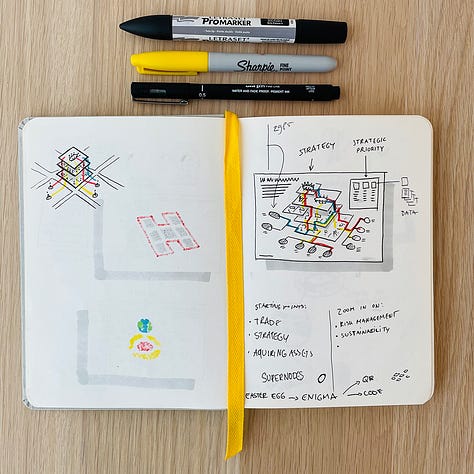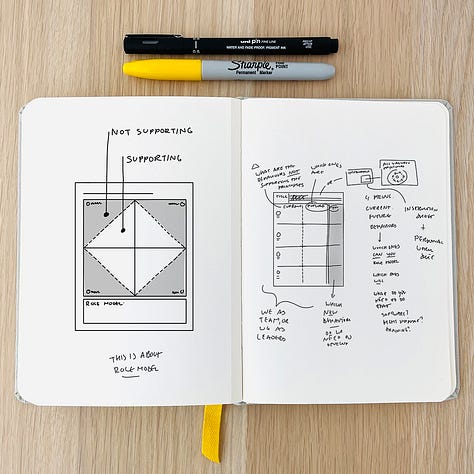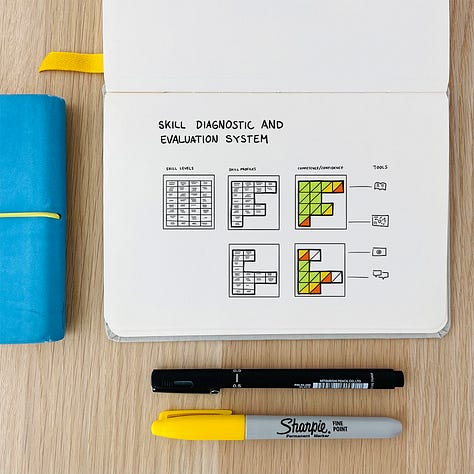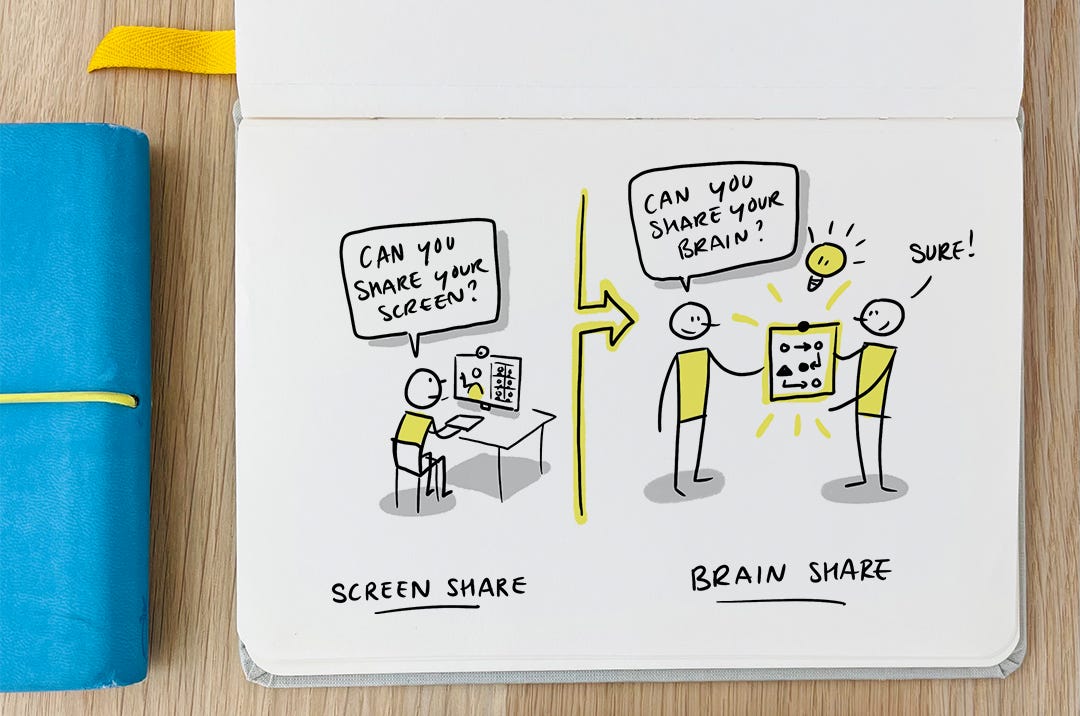From screen sharing to brain sharing
We’ve all said it: "Can you share your screen?" It helps align discussions and clarify ideas. But what if we could do the same for what’s in our minds?
Screen sharing has become second nature in online meetings. When words aren’t enough, we rely on visuals to clarify our point. Seeing the same thing helps teams align faster and removes ambiguity.
However, while screen sharing helps us understand existing content, it doesn’t help us create new ideas. It’s a one-way transfer of information, not a tool for real collaboration.
Visual Thinking: Beyond sharing ideas
Imagine if, instead of just sharing what’s on your screen, you could share what’s in your mind. That’s what Visual Thinking does.
By sketching ideas on paper, a tablet, or a whiteboard, you make your thinking visible, tangible, and adaptable. Instead of passively presenting, you invite others to engage with, refine, and build on your thoughts.
This is more than just "Brain Sharing"—it’s an active, dynamic way to align, co-create, and iterate ideas.



Why Visual Thinking works better
Using simple visuals takes the collaboration one step further:
It verifies understanding. Instead of assuming everyone sees things the same way, a drawing makes mental models explicit and tangible.
It invites co-creation. Others can add, refine, or challenge ideas—not just react to a slide. It turns passive viewers into active participants.
It sparks iteration. Unlike static slides, sketches evolve as the conversation progresses, helping teams refine ideas dynamically.
It keeps people engaged. Drawing is interactive by nature. It moves discussions from consumption to creation.
How to get started
Swap slides for sketches. Next time you need to explain an idea, try drawing instead of opening a PowerPoint.
Use digital whiteboards. Tools like Miro or Mural allow teams to sketch, iterate, and refine ideas in real-time.
Think visually. Even simple shapes, arrows, and stick figures can make a concept clearer than a bullet-point list.
Make it a habit. Like screen sharing became second nature, Visual Thinking can become part of how you collaborate—online or offline.
From passive to active collaboration
We’ve already seen how powerful screen sharing can be. Now, it’s time to take it a step further. So next time you're tempted to ask, "Can you share your screen?", consider asking instead: "Can you draw that out?"
Because the best ideas don’t just need to be seen—they need to be built together.




Love the re frame from ‘screen sharing’ to ‘brain sharing’. It reminds me why I work visually to get real collaboration happening. Building ideas together rather than just showing..